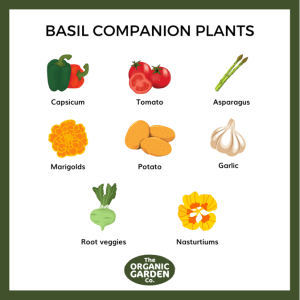Yes, any color marigold works well for companion planting in Texas. They repel pests and attract beneficial insects.
Marigolds are a popular choice for companion planting due to their pest-repellent properties. These vibrant flowers deter harmful insects and attract pollinators, improving the health of neighboring plants. In Texas, marigolds thrive in the warm climate and provide continuous benefits throughout the growing season.
Their versatility makes them suitable for various garden setups, from vegetable patches to ornamental borders. Gardeners appreciate marigolds for their low maintenance and resilience. By incorporating marigolds into your garden, you create a healthier, more productive environment for your plants. Whether orange, yellow, or red, marigolds enhance the overall garden ecosystem.
Introduction To Companion Planting
Companion planting is a method of growing plants together. The right combinations can help plants grow better. This method can reduce pests and improve soil health. In Texas, many gardeners use marigolds for companion planting. But, will any color marigold work?
Benefits Of Companion Planting
- Pest Control: Some plants repel harmful insects.
- Improved Growth: Certain plants help others grow better.
- Soil Health: Some plants add nutrients to the soil.
- Space Efficiency: Grow more plants in the same space.
Common Companion Plants
| Plant | Companion | Benefit |
|---|---|---|
| Tomato | Basil | Repels insects |
| Cucumber | Dill | Improves growth |
| Carrot | Onion | Repels pests |
Marigolds are popular for companion planting in Texas. They repel many pests. This helps protect other plants. But, does the color of the marigold matter? Some gardeners believe different colors work better. Let’s explore this idea further.
Marigolds As Companion Plants
Marigolds are popular for companion planting. Their bright colors and strong scents are not just for looks. They also repel pests and improve soil health.
Why Choose Marigolds?
Marigolds are easy to grow. They thrive in the Texas heat. They are also low maintenance and resistant to many diseases.
Marigolds attract beneficial insects. These insects help control harmful pests. This reduces the need for pesticides.
Marigolds release a substance called alpha-terthienyl. This helps control root-knot nematodes in the soil.
- Easy to grow
- Heat-resistant
- Low maintenance
- Attract beneficial insects
- Control harmful pests
Types Of Marigolds
There are different types of marigolds. Each type has unique features. Here are some common ones:
| Type | Features |
|---|---|
| French Marigolds | Compact, bushy plants. Bright flowers, strong scent. |
| African Marigolds | Tall plants. Large, pom-pom-like flowers. |
| Signet Marigolds | Small, single-petaled flowers. Citrus-scented leaves. |
Choose the right type for your garden. Consider the space and look you want. All marigolds will help your garden thrive.
Color Variations In Marigolds
Marigolds are popular for companion planting in Texas. They come in various colors. Each color has its unique effect on plant health. Understanding these color variations can help you choose the best marigolds for your garden.
Popular Marigold Colors
Marigolds come in many vibrant colors. Here are some popular ones:
- Yellow Marigolds: Bright and cheerful, they attract beneficial insects.
- Orange Marigolds: Warm and inviting, they repel many garden pests.
- Red Marigolds: Bold and striking, they add a pop of color.
- White Marigolds: Clean and elegant, they offer a unique look.
Color Impact On Plant Health
Different marigold colors can affect plant health differently:
| Color | Impact on Plant Health |
|---|---|
| Yellow | Attracts beneficial insects like bees and ladybugs. |
| Orange | Repels harmful pests like nematodes and aphids. |
| Red | Boosts the visual appeal of your garden. |
| White | Provides contrast, making other colors stand out. |
Choosing the right marigold color can enhance your garden’s health and beauty.
Texas Climate And Soil
Understanding the Texas climate and soil is essential for successful companion planting with marigolds. Texas boasts diverse climates and soil types, each affecting plant growth differently. This section will explore the different climate zones and soil types across Texas.
Climate Zones In Texas
Texas features a variety of climate zones, from arid deserts to humid coastal areas. There are four main climate zones in Texas:
- West Texas: Arid and semi-arid, with minimal rainfall.
- North Texas: Humid subtropical, with hot summers and cool winters.
- Central Texas: Transitional, with hot summers and mild winters.
- East Texas: Humid, with significant rainfall and mild winters.
Each zone offers unique challenges and benefits for growing marigolds. Knowing your climate zone helps in selecting the right marigold variety for companion planting.
Soil Types Across Texas
Texas soil varies widely, impacting plant growth and health. The primary soil types found in Texas include:
| Region | Soil Type | Characteristics |
|---|---|---|
| West Texas | Calcareous | High in lime, well-drained |
| North Texas | Clay | Heavy, poor drainage |
| Central Texas | Loam | Balanced, fertile |
| East Texas | Sandy | Good drainage, low fertility |
Soil type plays a crucial role in how well marigolds grow and thrive. Choose marigold varieties suited to your soil for the best companion planting results.
Best Marigold Colors For Texas
Marigolds are fantastic companions for many plants. They can deter pests and attract beneficial insects. In Texas, the hot climate and varied soil types mean choosing the right marigold colors is essential. This ensures that your garden thrives and looks beautiful.
Heat-tolerant Varieties
Texas summers are hot, and not all marigolds can handle it. Here are some heat-tolerant varieties:
- French Marigolds: Small and robust, these marigolds thrive in heat.
- Signet Marigolds: Their delicate leaves and blooms are perfect for hot climates.
- Mexican Marigolds: Known for their resilience, they withstand high temperatures.
Soil-compatible Colors
Different soil types in Texas can affect marigold growth. Choose colors that adapt well:
| Soil Type | Marigold Colors |
|---|---|
| Sandy Soil | Bright Yellow and Orange |
| Clay Soil | Deep Orange and Red |
| Loamy Soil | All Colors thrive well |
Choosing the right marigold color for your soil type ensures healthy growth.

Credit: gardenmixit.com
Planting Techniques
Marigolds are excellent companion plants for Texas gardens. They deter pests and attract beneficial insects. Understanding proper planting techniques can ensure your marigolds thrive alongside your vegetables.
Optimal Planting Times
Marigolds grow best in Texas during warm months. Plant them after the last frost in spring. For fall planting, choose a time 6-8 weeks before the first frost.
| Season | Planting Time |
|---|---|
| Spring | After last frost |
| Fall | 6-8 weeks before first frost |
Spacing And Arrangement
Proper spacing ensures marigolds and companion plants grow well. Give each marigold plant 8-12 inches of space. This allows enough room for roots and air circulation.
Arrange marigolds in rows or clusters. Surround your vegetable plants with marigolds for optimal pest control. Use a mix of tall and short varieties for better coverage.
- Space: 8-12 inches apart
- Arrangement: Rows or clusters
- Mix: Tall and short varieties
Marigolds thrive in well-drained soil. Ensure soil is loose and rich in organic matter. Water regularly but avoid waterlogging.
Marigold Care And Maintenance
Marigolds are vibrant and hardy flowers that thrive in Texas. They are excellent companion plants due to their pest-repelling qualities. Proper care and maintenance ensure their health and effectiveness. Below are essential tips for keeping your marigolds happy and thriving.
Watering And Fertilizing
Marigolds need moderate watering. Water them deeply once a week. Ensure the soil is well-drained to prevent root rot. Avoid overhead watering to keep the leaves dry and prevent fungal diseases.
Fertilize marigolds sparingly. They thrive in average soil and too much fertilizer can reduce blooms. Use a balanced, slow-release fertilizer once at planting time. Avoid nitrogen-heavy fertilizers, which encourage foliage over flowers.
Pest And Disease Control
Marigolds are generally pest-resistant, but they can attract spider mites and aphids. Check leaves regularly for signs of pests. Use insecticidal soap if needed.
To prevent diseases, ensure proper spacing between plants for good air circulation. Remove any dead or diseased foliage promptly. Mulch around the plants to retain moisture and prevent weeds.
By following these simple care tips, your marigolds will flourish and provide excellent support to other plants in your garden.

Credit: www.jacksonandperkins.com
Success Stories And Tips
Choosing the right marigold color for companion planting in Texas can be tricky. Many gardeners have found success with specific colors. Below, you’ll find their experiences and expert advice.
Gardener Experiences
Local gardeners in Texas have shared their success stories:
- Bright Orange Marigolds: These are popular for their vibrant color. They repel nematodes and attract pollinators.
- Yellow Marigolds: These are great for deterring pests. They also add a sunny touch to the garden.
- Mixed Colors: Some gardeners use a mix of orange, yellow, and red. This combination enhances the beauty and effectiveness.
Here are some specific gardener experiences:
| Gardener | Marigold Color | Results |
|---|---|---|
| Alice from Dallas | Bright Orange | Reduced nematodes in her tomato plants |
| Bob from Austin | Yellow | Kept pests away from his herbs |
| Carol from Houston | Mixed Colors | Enhanced overall garden health |
Expert Tips For Success
Experts offer these tips for using marigolds in Texas:
- Choose the right variety: French and African marigolds are the best. They are hardy and effective.
- Plant in full sun: Marigolds need at least 6 hours of sunlight daily.
- Water regularly: Keep the soil moist but not waterlogged.
- Use companion planting: Pair marigolds with tomatoes, peppers, and beans. This improves growth and repels pests.
By following these tips, you can achieve a thriving garden. Marigolds can be a beautiful and functional addition. Their vibrant colors and pest-repelling properties make them ideal for Texas gardens.
:strip_icc()/coneflower-black-eyed-susan-c86de970-d5261bdbc17545e4b1fa9f8d0afd2dbd.jpg)
Credit: www.bhg.com
Frequently Asked Questions
What Colors Of Marigold Are Best For Texas?
In Texas, yellow and orange marigolds are ideal for companion planting. They thrive in hot climates and repel pests effectively.
Can Marigolds Grow Well In Texas Heat?
Yes, marigolds grow well in Texas heat. They are heat-tolerant and can withstand high temperatures, making them perfect for Texas gardens.
Do Marigolds Repel Pests In Texas Gardens?
Marigolds effectively repel pests like aphids and nematodes in Texas gardens. Their scent deters many harmful insects, protecting companion plants.
Are All Marigold Varieties Suitable For Texas?
Not all marigold varieties are suitable for Texas. French and African marigolds are the best choices due to their heat tolerance.
Conclusion
Choosing the right marigold color for companion planting in Texas is essential. Different colors attract beneficial insects. They also repel pests effectively. Ensure you select vibrant marigold varieties for the best results. Happy planting and enjoy a healthier garden with colorful marigolds in Texas!





